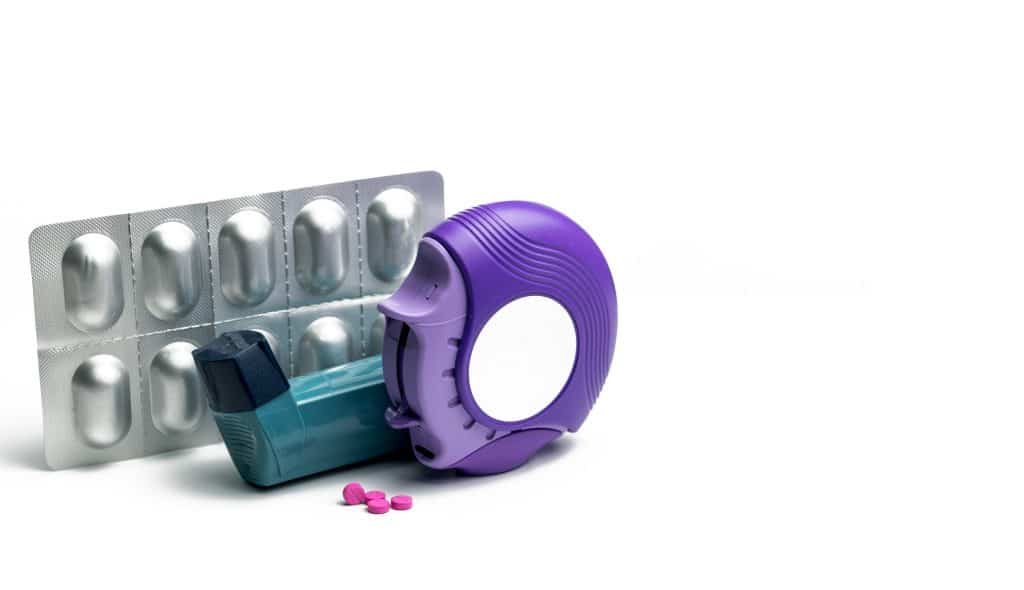Dulera vs Symbicort, Ease of Use, Dosage, Side Effects, Costs
Posted by Prescription Hope - See Editorial Guidelines (Last Updated On: Thu May 13 2021)
It’s not always that obvious which drug you should be taking, and which is more effective. This can also apply to Dulera or Symbicort. So, here we’re going to provide an in-depth guide for all you need to know about both, Dulera vs Symbicort – with comparisons, applications, side effects, costs, and where to get it – plus coupons!

But first, here’s the quick-fire answer to take away, then we’ll get into a lot more of the details, plus some comparisons for you.
Dulera vs Symbicort? Both Dulera and Symbicort are inhalers that are used for controlling and preventing symptoms of asthma. Symbicort is also for COPD treatment. Both these medications work similarly, except Dulera is used for controlling high and moderate asthma conditions and Symbicort for severe asthma conditions.
What Is Dulera
Dulera is a medication prescribed for people at the age of 12 years and older for controlling and preventing symptoms of asthma.
This is a medication for the long-term control of asthma and is good for people who experience moderate to severe asthma.
This medication is also good for patients who need more than 1 inhaled medication to control their asthma and related symptoms.
This is because Dulera contains a combination of two active ingredients as the inhaled corticosteroid medication known as mometasone furoate and a long-acting beta2-agonist medication (LABA) known as formoterol.
As we know, asthma and related symptoms are caused due to the narrowing of the airways and tightening of the muscles around the airway in the lungs.
These two ingredients work to reduce such effects. Inhaled corticosteroids support in reducing the inflammation in the lungs. LABA relaxes the muscles around the airway in the lungs, which will then open up airways, making it easier to breathe.
What Is Symbicort
Symbicort is a medication prescribed for controlling and preventing the symptoms of asthma and chronic obstructive pulmonary disease (COPD) (including chronic bronchitis and emphysema). This medication is prescribed for children at least 6 years old and adults.
However, unlike Dulera, Symbicort is prescribed for people with asthma only if asthma is not well-controlled by other long-term asthma medications.
Your doctor may ask you to stop the intake of this medication once your asthma is well-controlled.
Symbicort also combines two active ingredients as budesonide and formoterol. These two ingredients also broaden and relax muscles around the airways, which is what those with severe asthma conditions need. Budesonide is a corticosteroid that reduces inflammation in the body. Formoterol is a long-acting bronchodilator that relaxes muscles in the airways to support easy breathing.
However, the use of the ingredient Formoterol alone may increase the risk of death in people with asthma. This risk is removed in Symbicort because formoterol is combined with budesonide.
Are Dulera And Symbicort The Same Thing?
Although Dulera and Symbicort are not the same, they are similar in many ways. Both combine two medications into one inhaler and are prescribed for safer long-term control and prevention of asthma – and Symbicort for COPD too.
Both these medications are also combined into one inhaler, making it easier to use.
However, among the two ingredients used in Dulera and Symbicort, formoterol fumarate dehydrate is common to both. Whereas Dulera has mometasone furoate, and Symbicort has budesonide.
Dulera is used for controlling moderate to severe asthma, whereas Symbicort is used for controlling asthma, COPD, and related symptoms only for severe asthma conditions. However, both these medications causer fewer side effects when compared to other oral treatments taken for asthma.
How to Take Dulera

Dulera comes in two strengths, and your healthcare provider will prescribe the best strength for you. Make sure you take Dulera as prescribed by the doctor, not more or less.
Dulera is taken in the form of an inhaler and should be taken as 4 puffs every day. 2 puffs in the morning and 2 in the evening. If you miss a dose of Dulera, you should skip the missed dose and take the next dose in your regular time.
While taking Dulera, make sure you do not take medications that contain a long-acting beta2-agonist (LABA) for any reason.
When getting medications from the pharmacist or when your doctor prescribes medications, be sure to ask if these medications are LABA medications.
Never change or stop using Dulera even when your breathing problems are cured unless told to do so by your healthcare provider. Depending on how Dulera performs, your doctor may change medications and dosage as needed.
As Dulera is a long-term treatment, it will not treat sudden asthma symptoms. So, while using Dulera, make sure you have a rescue inhaler that will treat sudden symptoms. Use this rescue inhaler if you experience any breathing problems between doses of Dulera.
How to Take Symbicort
Use Symbicort exactly as prescribed. Similar to Dulera, Symbicort also comes in 2 strengths, and your doctor will prescribe which strength best suits you. And if you’re using any other inhaled medications, make sure you note the differences between Symbicort and the other medications.
Symbicort is taken as an inhaler as 4 puffs every day. 2 puffs in the morning and 2 puffs in the evening about 12 hours apart. And if you miss a dose of Symbicort, skip that dose. Take the next dose at the regularly scheduled time.
As Symbicort is used for controlling asthma and COPD, you might have to take Symbicort only till your conditions are well-controlled. Your health care provider will inform you when you should stop using this treatment,
Note – After taking both Dulera and Symbicort, make sure you rinse your mouth with water after each dose (2 puffs) and then spit out the water. This will reduce the chances of fungus infection in your mouth and throat.
Dulera vs Symbicort – Side Effects
Side Effects of Dulera
Common side effects of Dulera include:
- Anxiety
- Back pain
- Changes in menstrual periods for women
- Cough
- Dizziness
- Dry mouth
- Headache
- Hoarseness or deepened voice
- Itching or irritation
- Muscle cramps
- Sinus pain
- Skin rash
- Sore throat
- Stuffy nose
- Problems with sleeping or falling asleep (insomnia)
Side Effects of Symbicort
Common side effects of Symbicort include:
- An itchy throat or irritation
- An upset stomach
- Back pain
- Changes in your voice
- Diarrhea
- Headache
- Muscle or joint pain
- Nausea
- Stuffy nose
- Vomiting
Cost of Dulera vs Symbicort
The cost for Dulera inhalation aerosol (100 mcg/5 mcg) is around $230 for a supply of 8.8 grams. Whereas the cost for Symbicort inhalation aerosol (160/4.5 mcg) is around $256 for a supply of 6 grams. The costs may vary depending on the pharmacies.
And this cost is only for cash paying customers and are not subject to insurance plans. We offer coupons via our patient assistance programs, so if you’re struggling to afford either of these medications, then why not come and talk to us.
Dulera Coupon
You can find a coupon for Dulera here
Symbicort Coupon
You can find your coupon for Symbicort here
Drug Interactions with Dulera and Symbicort
Dulera interacts with antifungal medications, antibiotics, aldesleukin, beta-blockers, and HIV protease inhibitors. Whereas, Symbicort may interact with antibiotics, antidepressants, beta-blockers, antifungal medication, MAO inhibitors, or diuretics (water pills).
Note – Make sure you tell your doctor all the medications you’re taking and if you are breastfeeding. It is unknown if the ingredients in these medications pass into breast milk. And if you’re pregnant, these medications should be taken only if your doctor prescribes it for you.
To Conclude
We hope this has provided some guidance for you on the pros and cons and comparisons with Dulera vs Symbicort.
As always, for more advice and in-depth consultation, always refer to your doctor or relevant health professional relating to your own individual circumstances.
If you have any questions about how Prescription Hope can help you save money for any other drugs that we offer, or, if you’re having trouble affording any of the medications you’ve been prescribed, then contact us. Visit the enrollment page to create an account and fill out an application and let us save you and your family money!



